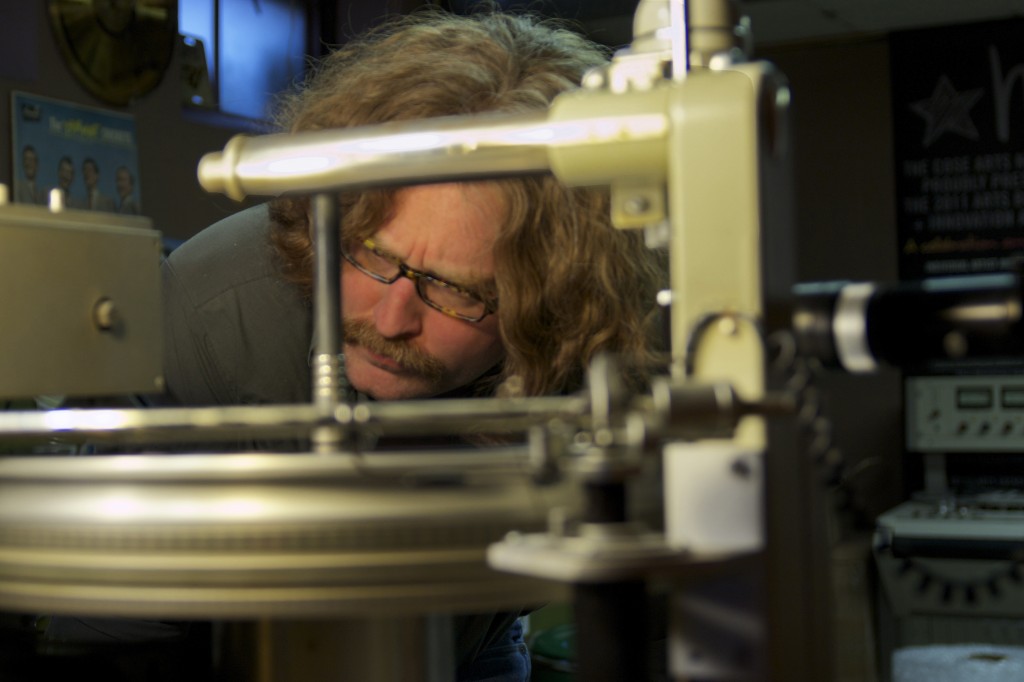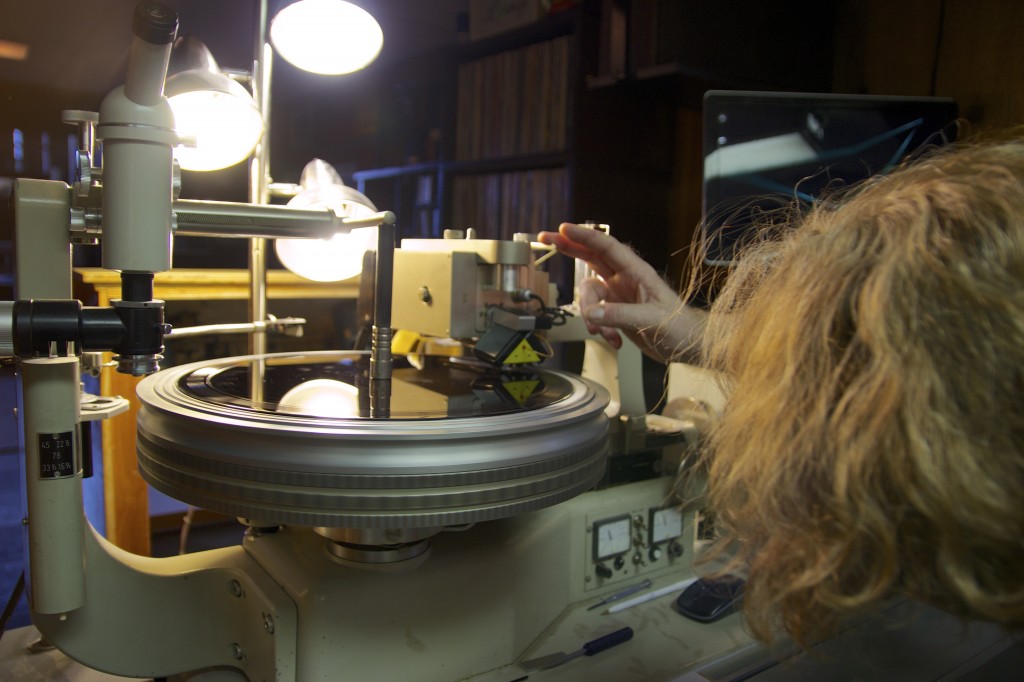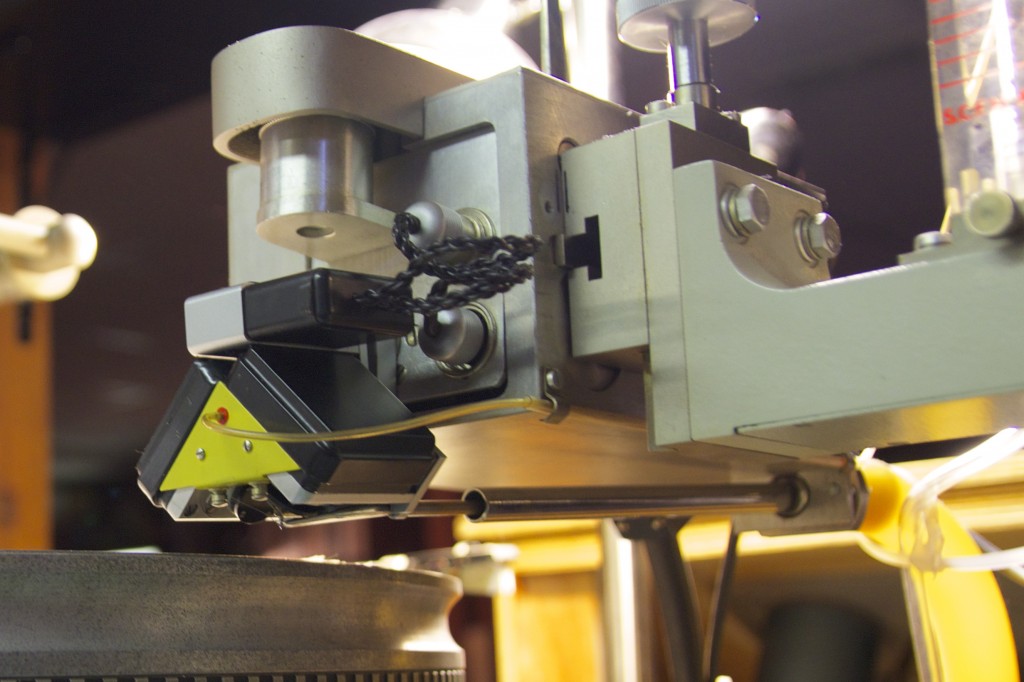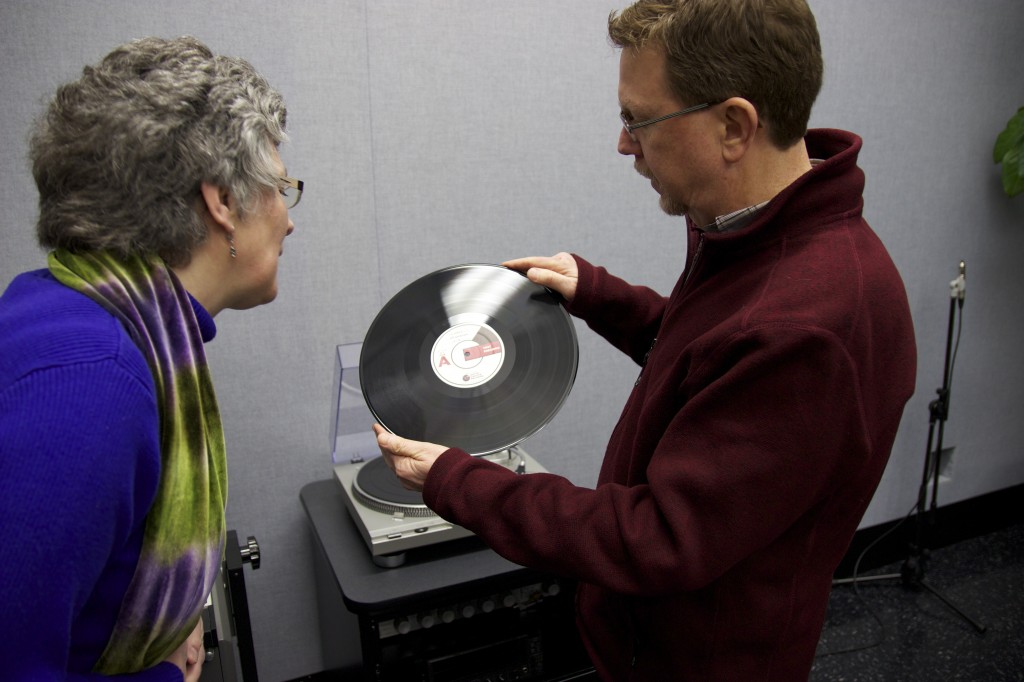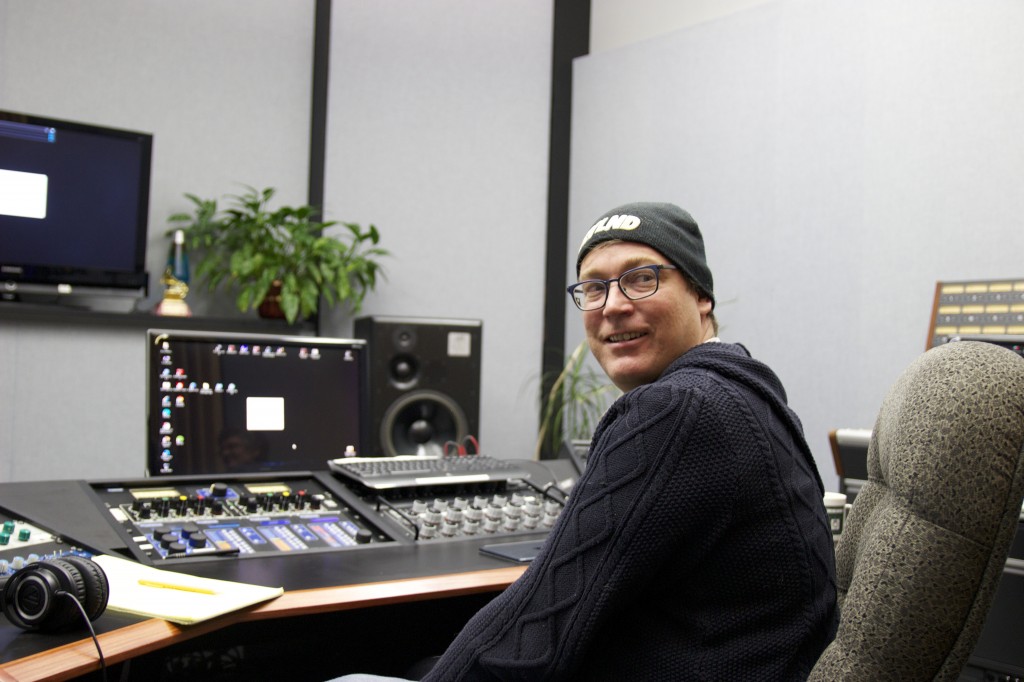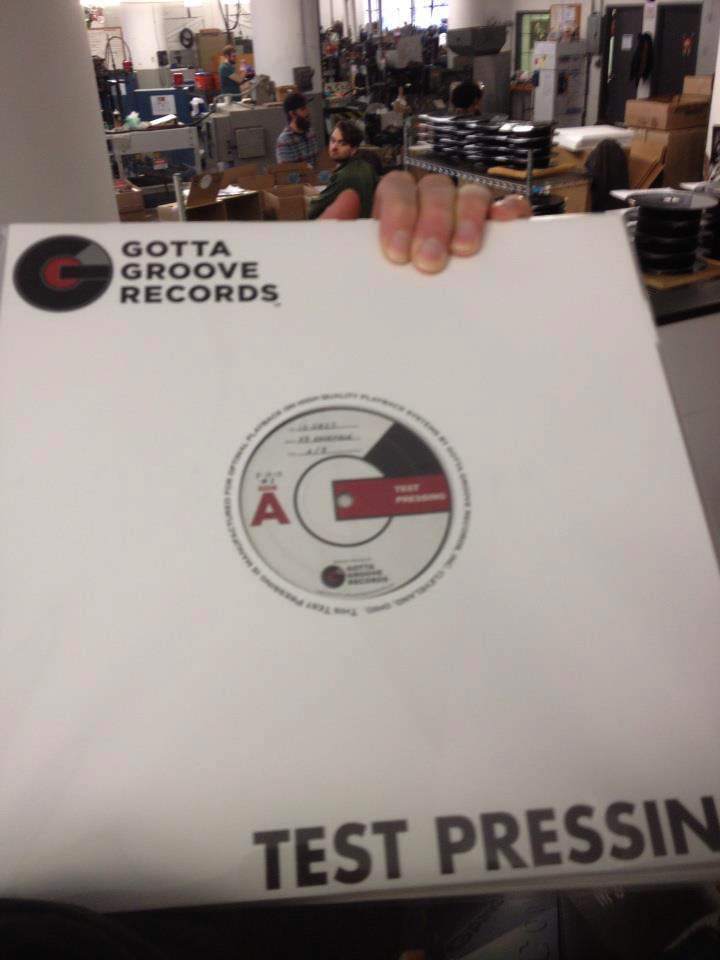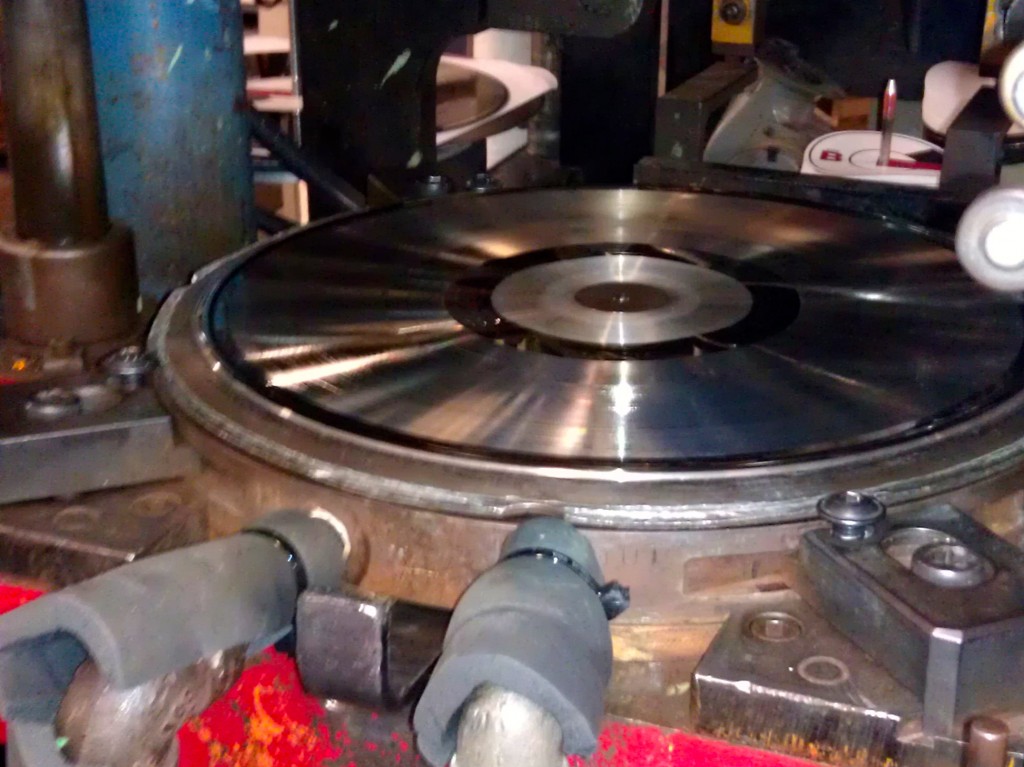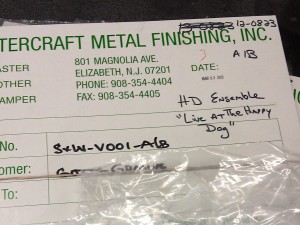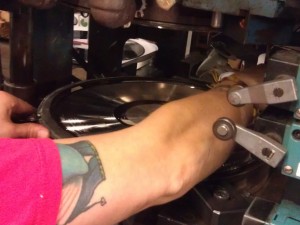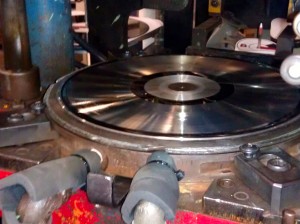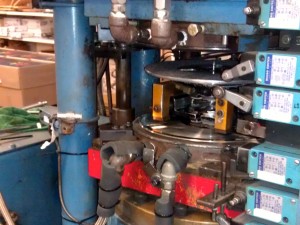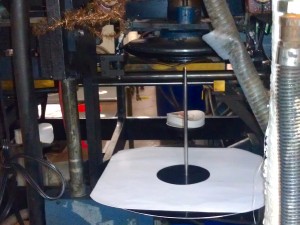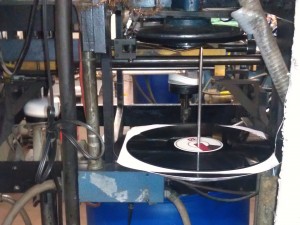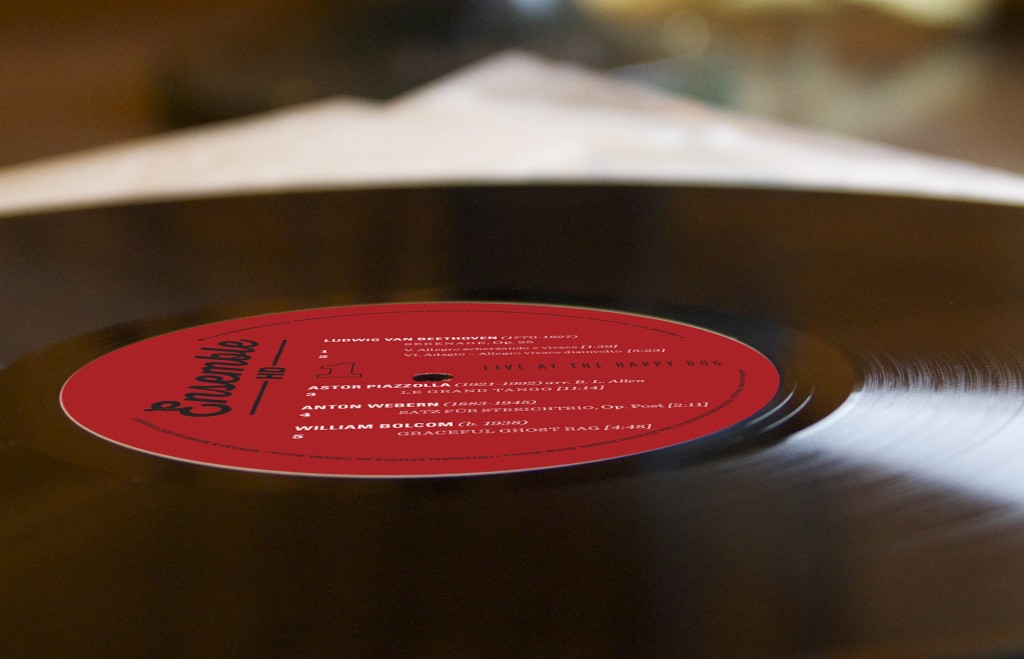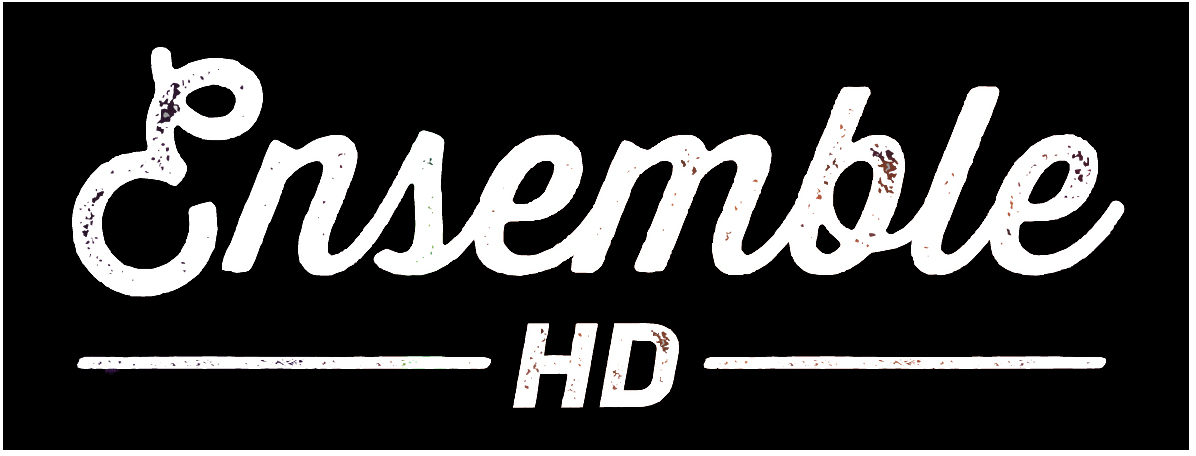World class record production requires a lot of collaboration. Artisans like Clint Holley of Well Made Music are an essential part of the process. We started with superb recorded sound from Erica Brenner, producer and Thomas Knab, recording engineer. But how to transfer the beautifully mastered sound to vinyl? Clint is one of the best in the business at bringing great sound to vinyl. Here Clint transfers the recorded sound to a lacquered disk. The machine that cuts the lacquer is a Neumann – VMS 70 cutting lathe – meticulously restored a few years ago by a recording technician who was in his 80s.
Clint lowers the sapphire cutting stylus onto an aluminum disk coated with nitrocellulose lacquer. The calculation of the groove spacing is a meticulous process. Any imperfections in the coating or cutting of the lacquer will diminish the quality of the final record. This lathe, built in the early 1970s, cuts the lacquer disk with a precisely engineered mechanism. The disk is held in place by a vacuum to keep it secure on the lathe. The magnetic coils that move the cutting stylus get hot as they move. To keep them cool, helium gas flows past them to remove the heat. Helium is used because of its high specific heat. The spirals of cut lacquer coming off the stylus are quickly drawn off the disk by vacuum.
This is the cutting stylus. The small tube entering the top of the yellow triangle of the cutting head, supplies the cooling helium. The metal tube to the right of the stylus, is the vacuum that removes the cut lacquer. Depending on the characteristics of the recording, a sapphire stylus can cut up to 2o hours of music. For the Ensemble HD recording, Clint used a new stylus to insure optimal sound quality.
To check the cutting, Clint can play the lacquer with a tonearm built into the lathe. Generally, only the test cuts are played back. The final lacquer is seldom played because that would diminish the sound quality. Once the lacquer is cut, it is inspected with a microscope to make sure the continuous spiral groove has been properly cut. If it passes inspection, the lacquer is inscribed with a serial number, removed from the lathe, and immediately sent off for plating. The series of nickel plates that are produced from the cut lacquer will be used as stampers to press the vinyl record.
For more information about the process of making a vinyl record, check out the Test Pressing post and video.
Many thanks to Clint Holley of Well Made Music for the tour of his studio. He clearly loves his work!
